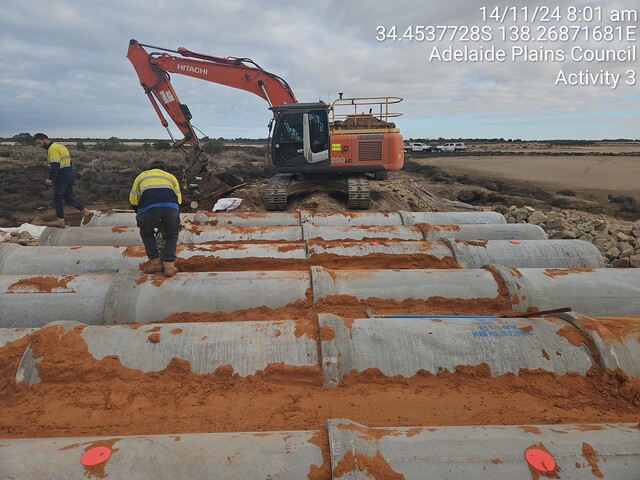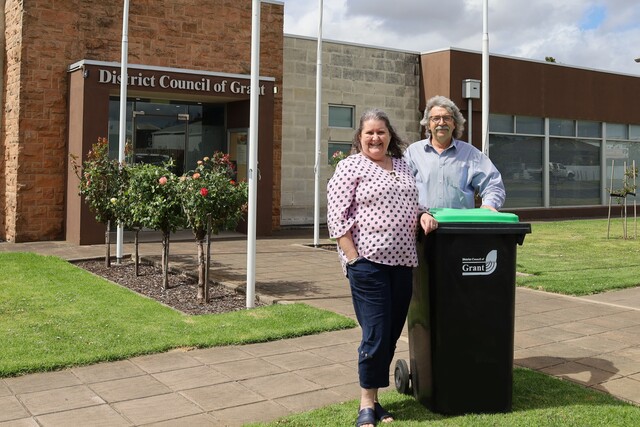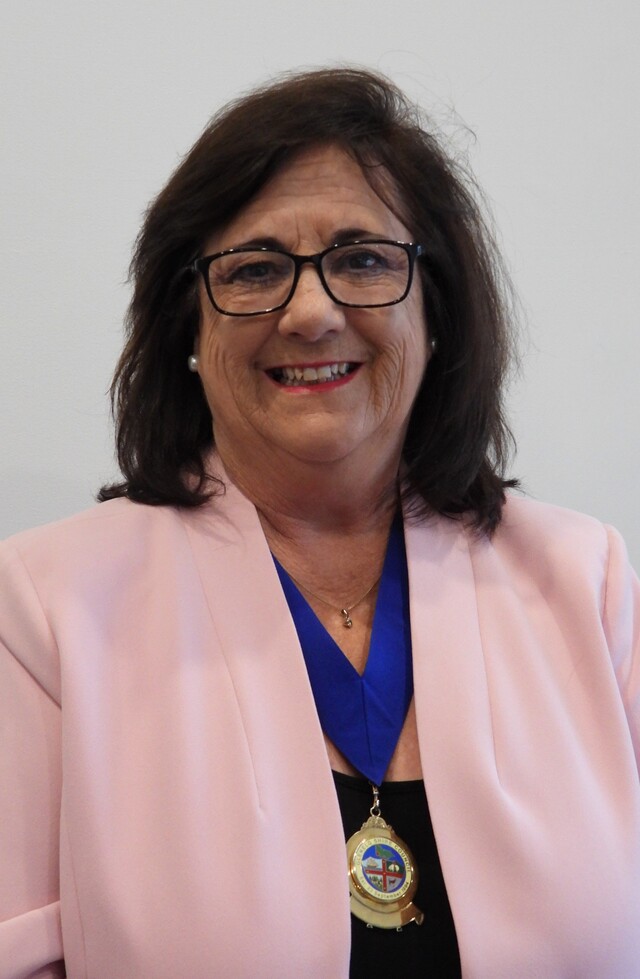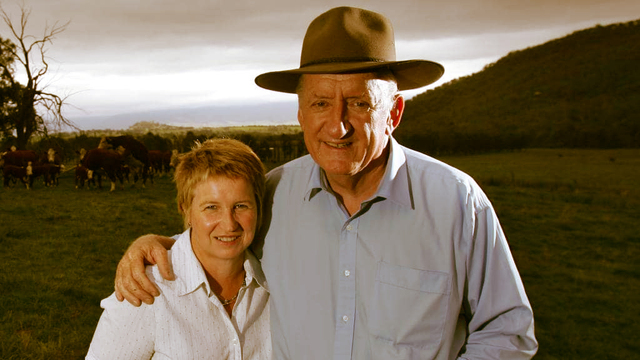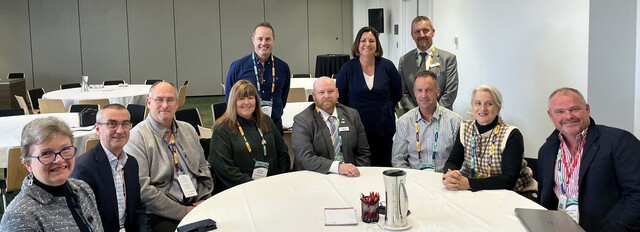A regular feature, this month we have interviewed two Councillors from South Australia.
Councillor Anne Woolford, Alexandrina Council, South Australia
Q. How long have you been Councillor?
I was elected to the Alexandrina Council in 2000 as a Ward Councillor for the township of Strathalbyn and was elected Deputy Mayor in 2003.
Q. Tell us about yourself ?
I was born and grew up in the eastern suburbs of Adelaide. After leaving school I worked in a number of jobs before travelling overseas. Upon my return I joined the Women Police Branch of the South Australian Police Department and had postings at Elizabeth, Mount Gambier and Whyalla. I transferred to the Criminal Investigation Branch, working as a Detective in the Business Agents Squad, Homicide Squad, Drug Squad and was a formation member of the Rape Enquiry Unit. I then transferred to the Crime Prevention Unit, presenting lectures and conducting site inspections, on all aspects of personal safety and business security. On retiring in 1996 I joined my husband, Collin, (also a retired Police Officer) on our 80 acre property at Belvidere (five km south east of Strathalbyn). Since this time we have been living in a house in Strathalbyn.
Q. Which issues do you feel passionate about?
Since joining Council I have been a member of the Southern Fleurieu Community Services Advisory Committee which oversees such projects as Caring Neighbourhood, Families First, Family Links, Home Visiting Program, Suicide Bereavement Support Group, Youth Development, Community Grants, Positive Ageing Taskforce, Volunteer Service and Youth Health Project just to name a few. Caring for the people in our community and continually finding way to improve lifestyle and services is very challenging. There have been, and continue to be, many positive outcomes from not only the paid staff, but from the many volunteers who assist in the running of these programmes.
Q. Describe your community
The Alexandrina Council area covers some 168,000 ha of the southern Fleurieu Peninsula with 482 kms of sealed roads and 865 kms of unsealed roads. The population is a little over 20,000 people. The area has a wide diversity of interests, general farming, viticulture, sale yards and abattoirs, dairying, fruit production, commercial flour mill, boat building, furniture manufacturing as well as coastal towns attracting a wide cross section of tourism activities. The Council head office is situated at the River Port of Goolwa, at the mouth of the River Murray. Strathalbyn, the town I represent, is situated towards the eastern side of the Fleurieu Peninsula. The District Council of Strathalbyn was formed in May 1854 and the first Municipal Council meeting was held in the Terminus Hotel in 1868. Strathalbyn Council continued until amalgamation with Port Elliott at Goolwa in 1997, thus forming the Alexandrina Council. There are many of the original stone buildings still in use within the town centre In recent years there has been increase in the number of houses being built in the district and Council is currently conducting public consultation to establish Strategic Planning guidelines for all townships within the Council boundaries.
Q. What are the most important issues in your Local Government area?
Apart from the major infrastructure problems such as rural roads, septic/sewage issued, one of the major concerns is the state of the Murray River and the silting of the mouth, which has caused major problems in the Coorong and to the tourism industry associated with the river. There is constant dredging being carried out to create a flow of water to the sea, but until there is enough natural flow this will be an ongoing problem.
Q. What major developments are currently taking place in Alexandrina?
The growth of the viticulture industry in the Langhorne Creek area has been of great benefit to the whole area. However, it has put pressure on infrastructure and has highlighted problems with the lack of suitable accommodation, for both tourists and vineyard workers within the area.
Mayor Lesley Purdom, City of Tea Tree Gully, South Australia
Q. How long have you been a Councillor?
I was first elected a Councillor in July 1970. I have spent a total of seven years as a Councillor, nine years as an Alderman and I am in my eleventh year as Mayor of this magnificent city. I have had three separate enforced rests through losing elections during those years.
Q. Tell us about yourself
I am married to Keith and we have four children and six grandchildren. We have run our own computing services business since 1974. We have lived in the City of Tea Tree Gully since 1961 when there were a total of 5,500 people living within the 96 square kilometres of this city. We have watched our city grow to the 100,000 residents who now enjoy living in this beautiful area.
Q. What issues do I feel passionate about?
I believe in promoting the importance of Local Government at every opportunity. Local Government is that level of government which has the capacity to respond quickest to an individual’s needs and the level of government which has the most impact on the everyday life of its residents. Local Government must provide a cost effective balance of service for all of its citizens. The preservation of our environment in this city is of prime importance to all residents. Our Council is responsible for the preservation of 100 kms of creeks and flood plains that are in public ownership. The wetlands which we are progressively constructing will give us opportunities in the future, and other water reuse and recycling initiatives will enable us to become less reliant on mains water in the future.
Q. Describe your community
The City of Tea Tree Gully has grown rapidly over the past 40 years. We have changed in that time from four small villages surrounded by farmlands and vineyards to a well designed urban city. Our Council was the first in South Australia to adopt the Model Planning Regulations of the State Government in 1968, and that gave surety to new land buyers regarding development that could take place around them. An engineer employed by Council in those years was careful to take as much as possible of the reserve land designated through those planning regulations along the creek lines, as much for flood control as for environment preservation. The beauty and character this created for our city attracted more people to live in this area.
We are situated some 15 kms north east from the CBD of Adelaide and are connected to Adelaide by an unique bus system known as the O-Bahn, which travels along the Linear Park constructed the length of the Torrens River . That bus journey takes about 15 minutes for the express journey, and several minutes extra for those trips, which accommodate the two stations along the way. We are known as a dormitory suburb, however, residents conducting their business from home occupy some 2,000 homes.
Q. What are the most important issues in this Local Government Area?
Preserving our environment and the quality of life for residents of today and for tomorrow and shifting from a rapidly developing Council area to maintenance Council. We also need an answer from other levels of government to the question who owns water, before we spend large amounts of ratepayer funds to make our city self sufficient with water, such as stormwater and other recycled water. As with all other Councils in Australia we are looking forward to the resolutions from the Cost Shifting Enquiry with the Federal Government.
Q. What are the key aspects to being a good Councillor?/p>
Listening to the community and understanding the aspirations and expectations of all ages and interests. Then bringing a balance of any conflicting interests through strategic planning for today’s needs with anticipated future requirements.
Q. What major developments are currently taking place in the City of Tea Tree Gully?
At present there are several large commercial developments. In the planning stage is a proposed youth training college for unemployed young people, focusing on building and automotive trades. Proposed rezoning of an extractive industry zone, which has been determined by State Government as being surplus to requirements to possible residential zone. Water reuse, recycling schemes, ongoing waste reduction to landfill through to community education.


